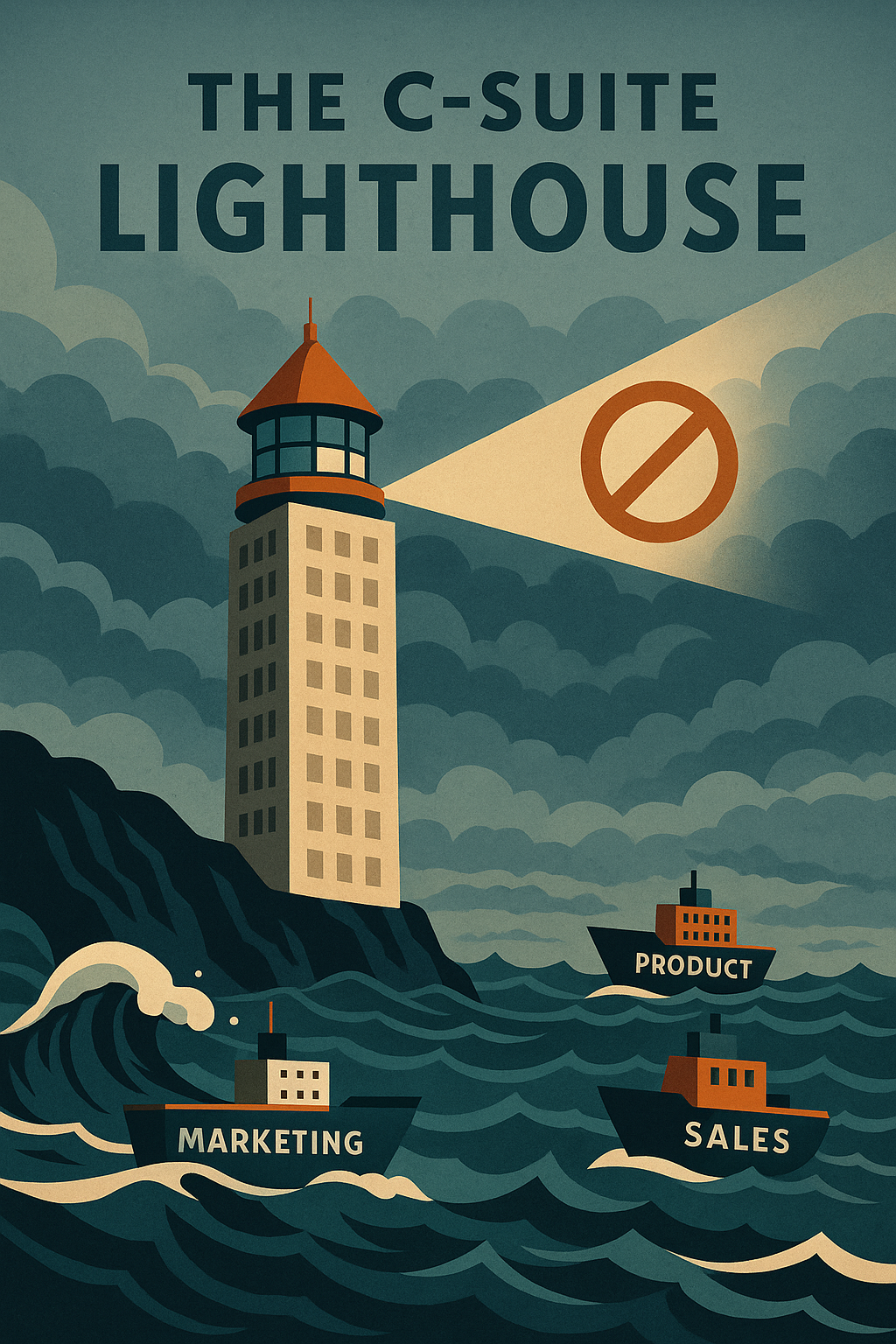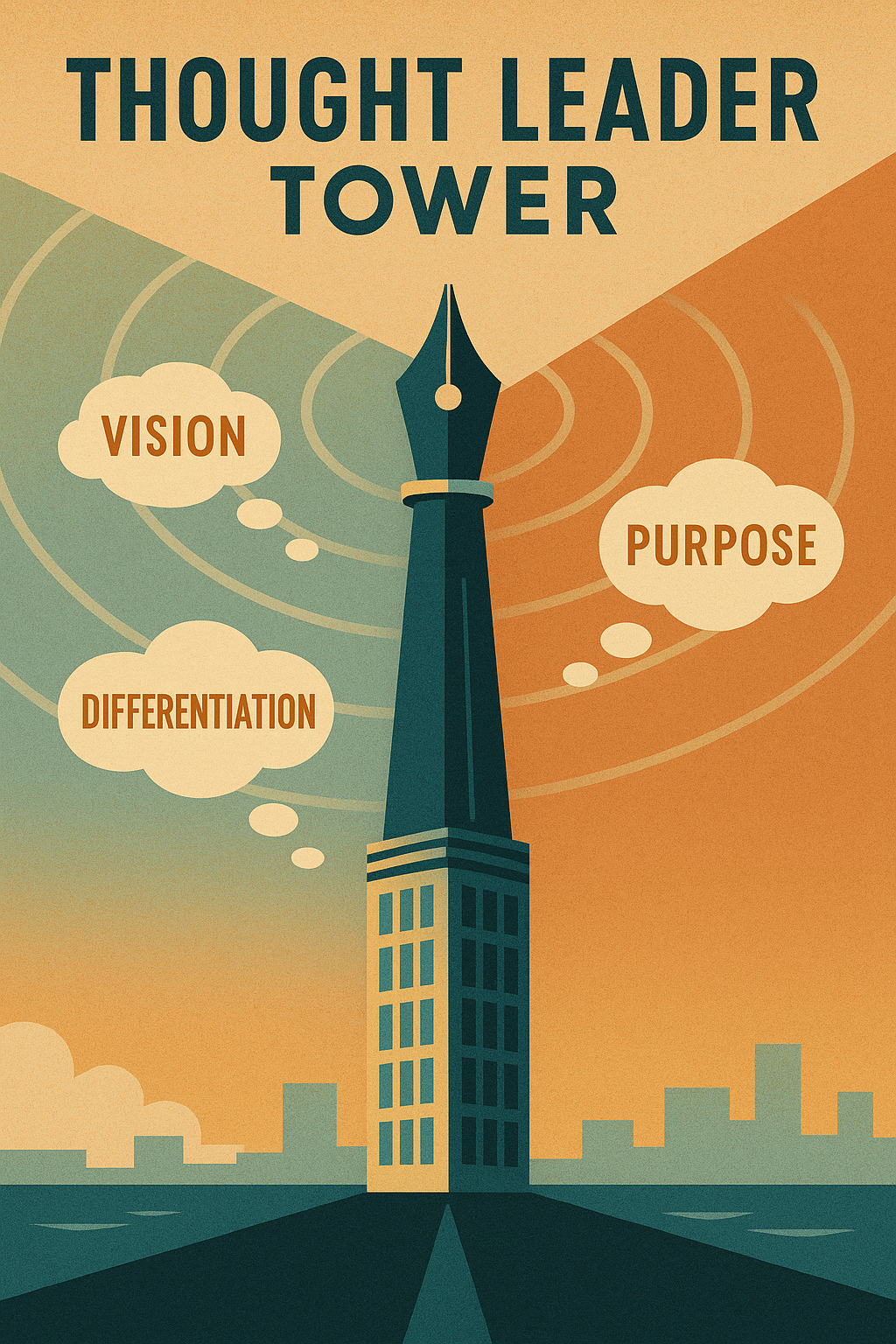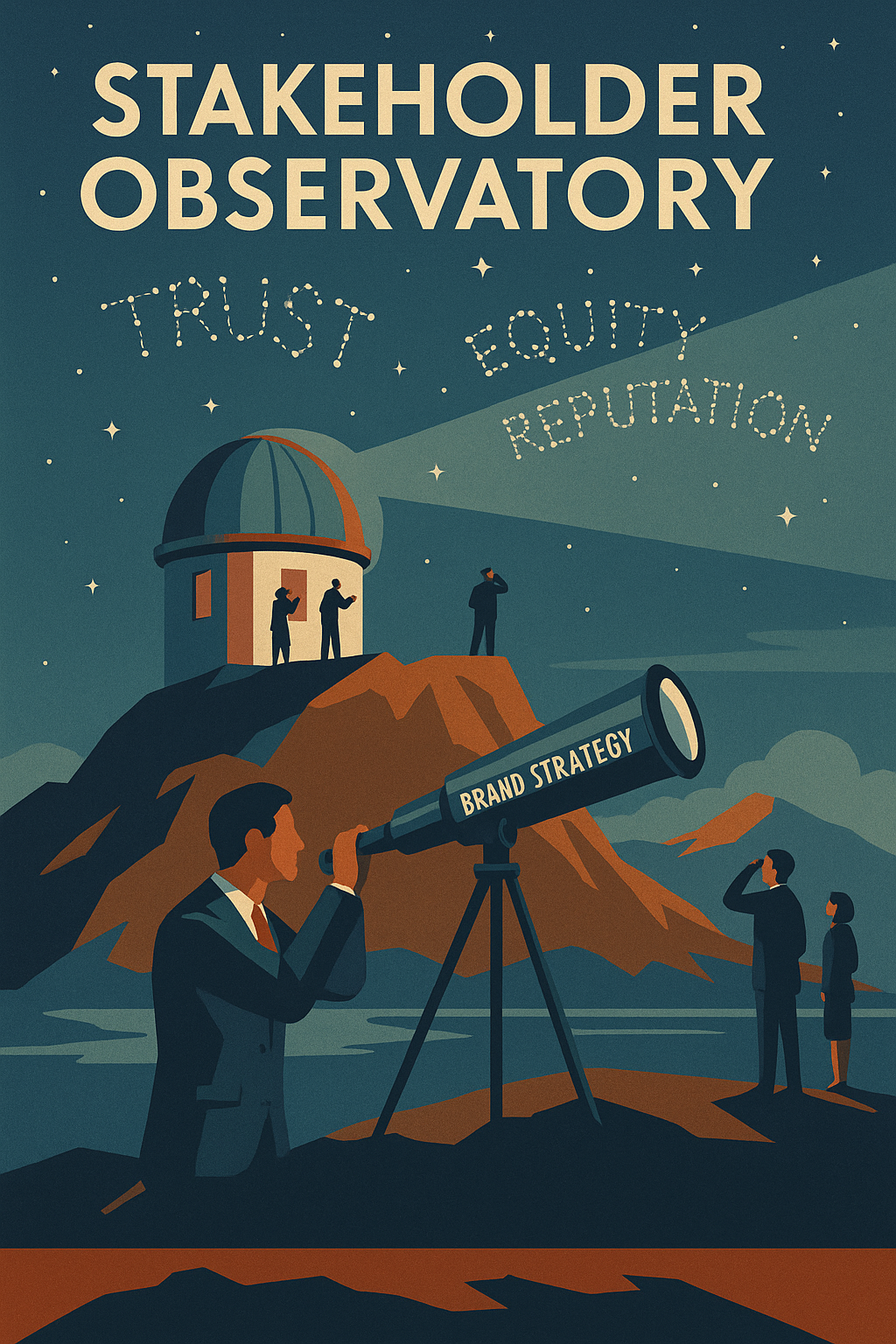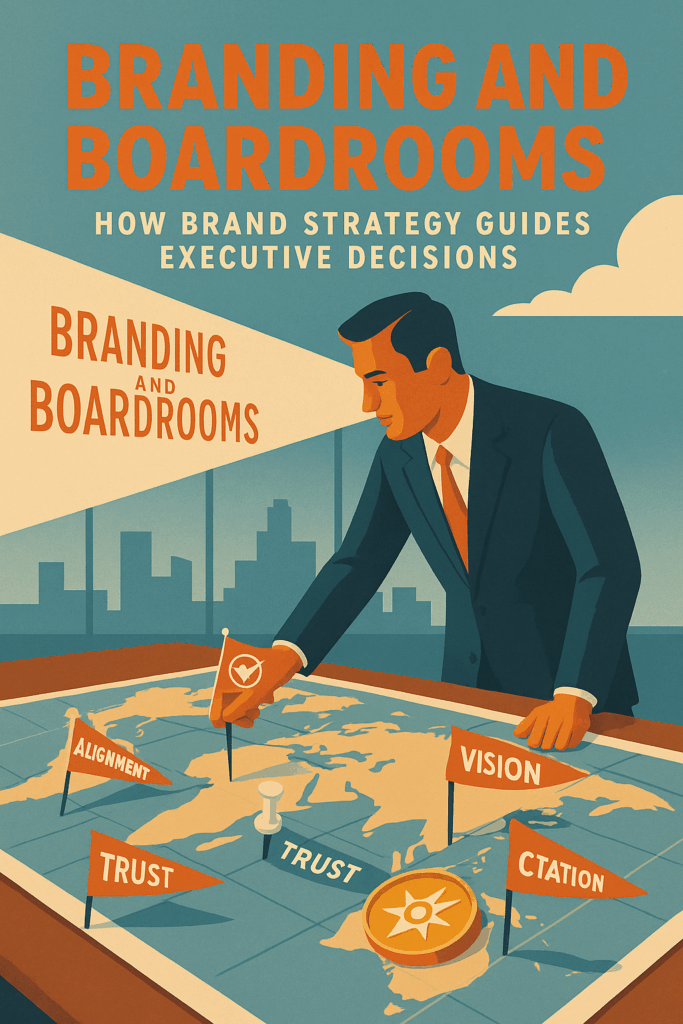You’re sitting at the helm of a business with bold ambitions, maybe even a game-changing product—but there’s a disconnect.
Your strategy’s tight, your numbers add up, and your pitch is polished. Still, something’s missing.
It’s not the product.
It’s not the plan.
It’s the brand—or more precisely, the lack of a brand strategy that speaks powerfully from the boardroom down.
In today’s business landscape, brand strategy is no longer just a marketing play—it’s a critical executive function.
If your brand doesn’t align with leadership, culture, and vision, you’re leaving influence, trust, and serious money on the table. The solution?
A brand strategy that doesn’t just shape logos and taglines, but one that drives executive decisions, guides corporate culture, and builds stakeholder trust from the top down.
I’m Viktor, and I’ve spent the last 13 years deep inside the engine rooms of strategy and branding—helping startups scale, corporations reposition, and executives build brands that cut through noise and command markets. This guide is your executive playbook for building a brand that doesn’t just show up well—but shows why it matters now.
Let’s get to work.
“The Right Brand Identity Can Add Zeros to Your Revenue.
Why Brand Strategy Belongs in the C-Suite
In today’s hyper-competitive landscape, a brand strategy is a leadership imperative.
The days of delegating brand direction solely to designers or mid-level marketing teams are over.
At the core of any successful brand lies a strategic brand vision shaped and championed by the executive team.
A strong executive brand communicates not just who the company is, but why it matters.
It influences everything from hiring top talent and winning investor confidence to increasing brand equity and creating long-term market differentiation.
When CEOs and senior leaders cultivate a personal brand aligned with the organization’s brand, they amplify reach, influence, and trust—both internally and externally.
Executive Branding is the Process of Strategic Differentiation
Executive branding strategies go far beyond media appearances or social posts.
They’re about aligning a leader’s unique value with the company’s broader mission. This means crafting a cohesive brand narrative that builds trust with key stakeholders, improves brand recognition, and drives new business opportunities.
Take Patagonia, for instance. Its outspoken environmental stance is deeply intertwined with the voice of its founder, Yvon Chouinard—showing how a CEO’s brand stand can directly influence product decisions, cultural identity, and public trust.
Similarly, Apple’s brand presence wouldn’t be what it is today without the iconic executive brand of Steve Jobs.
And in B2B spaces, Satya Nadella’s transformation of Microsoft exemplifies how a thought leader at the helm can reposition an existing brand, cultivating innovation and humility while driving exponential growth.
Brand Strategy vs. Marketing Strategy: C-Suite Relevance
| Feature / Function | Brand Strategy | Marketing Strategy |
|---|---|---|
| Purpose | Define company identity, principles, and value to stakeholders | Promote products/services to attract and convert customers |
| Focus | Long-term organizational positioning, vision, and differentiation | Short- to mid-term campaigns and tactics |
| Led by | C-Suite: CEO, CMO, CSO, sometimes COO and CHRO | Marketing and PR teams |
| Output | Brand narrative, identity systems, leadership presence, internal alignment | Ads, content campaigns, media buys, demand generation |
| Measurement | Brand equity, trust and credibility, leadership influence, reputation management | Lead generation, conversion rates, ROAS, customer acquisition |
| Impact | Guides culture, investor relations, strategic decisions, product development | Drives awareness and revenue through promotional channels |
| Time Horizon | Foundational and continuous | Campaign-based, often seasonal or initiative-driven |
This strategic depth is why brand management needs to happen at the top—not in a silo.
C-Suite Brand Ownership Drives Organizational Purpose
Without clear direction from the executive level, a company’s brand becomes fragmented, diluted, and reactionary.
Instead of building a strong and consistent narrative, businesses are left playing defense—responding to trends rather than setting them.
C-suite leaders must therefore not only create an effective brand strategy, but embody it. This means:
Participating in thought leadership content
Showing up on social platforms with intention
Becoming a trusted voice within your target audience
Embedding the principles that guide your business into every decision, message, and move
An effective executive brand builds trust and credibility, fuels internal alignment, and ensures the brand is perceived consistently across all touchpoints.

The Anatomy of an Effective Executive Brand
An executive brand is a business-critical asset that shapes how key stakeholders, investors, partners, employees, and the public interact with your brand at the highest level.
When crafted intentionally, it becomes a powerful extension of the organization’s brand, reinforcing brand strategy, aligning teams, and guiding the broader leadership narrative.
Defining a Personal Brand in a Corporate Context
A personal brand is the outward expression of your leadership identity, values, and vision. In a corporate context, a strong professional brand does more than communicate competence—it positions you as a strategic anchor for the organization.
Whether you’re a CEO, founder, or senior executive, your executive presence becomes the lens through which your business is interpreted.
Stakeholders don’t just invest in companies—they invest in people. They assess your image and reputation, your ability to articulate strategy, and the consistency between what you say and what you do.
This is where brand identity shifts from aesthetic to strategic: Are you seen as a forward-thinking leader?
A stabilizing force in turbulent times? A mission-driven innovator?
This perception plays a critical role in building a strong and credible brand foundation.
Elements of a Strong Executive Brand
Crafting an effective executive brand requires more than charisma or public visibility—it demands strategic clarity and ongoing alignment.
Here are the key elements:
Unique Value Proposition
Clearly define what you bring to the table that others don’t. This includes your leadership style, worldview, and long-term business philosophy.Areas of Expertise
Highlight the competencies and insights that set you apart—whether it’s supply chain optimization, disruptive innovation, sustainability, or capital markets.Executive Presence
Develop a consistent, confident presence across speaking engagements, leadership content, media appearances, and internal communications. Every touchpoint should reinforce your strategic position.Consistency Across Platforms
From your LinkedIn bio to quarterly town halls, investor calls to op-eds—ensure your messaging is aligned with the brand strategy of your company. This builds familiarity, confidence, and influence over time.
A successful executive brand acts as a marketing tool, a cultural compass, and a strategic differentiator—all at once.
Case Study: Building Trust with Stakeholders
Modeled Example: Olivia Chen, CEO of a FinTech Startup
When Olivia Chen took the helm of her startup, the company was struggling with low brand recognition despite strong product performance.
Internally, teams lacked clarity on the company’s direction. Externally, investors were unsure if the brand could scale with maturity.
Olivia developed an executive branding strategy grounded in three pillars:
Transparency: She began publishing monthly leadership memos and behind-the-scenes decision-making frameworks via LinkedIn.
Thought Leadership: Olivia authored op-eds on ethical finance in top industry journals and delivered keynote talks on financial inclusion.
Internal Alignment: She launched a recurring “Ask Me Anything” series to engage employees and reinforce brand values within the organization.
Within six months:
Stakeholder sentiment scores improved by 37%
The company closed a Series B round with two new investors citing “clarity of leadership” as a key factor
Employee retention increased by 21% due to perceived transparency and mission alignment
This transformation highlights how a personal brand, when aligned with a strategic brand vision, becomes a lever for value of the brand, trust-building, and sustainable business growth.

Strategic Brand Alignment: Synchronizing Executive and Corporate Brands
A cohesive brand is built when the leadership’s voice and vision are in sync with the overall company’s brand identity.
Yet in many organizations, there’s a gap—a disconnect between what executives stand for and how the brand is perceived externally.
This misalignment doesn’t just cause confusion; it undermines brand awareness, damages stakeholder trust, and limits market influence.
At its core, strategic brand alignment is about ensuring that your executive brand reinforces, rather than competes with, your corporate narrative. It means translating your leadership strategy, values, and professional identity into tangible expressions across every touchpoint—internal and external.
From your brand statement to your product messaging, and from your investor decks to your social presence, alignment ensures your organization operates as one unified voice.
Brand Alignment from Leadership to Touchpoint
True brand management starts at the top. Leaders set the tone—not just through policies, but through daily communication, cultural cues, and strategic storytelling. When executives embody and amplify the brand’s unique qualities that differentiate the business, they reinforce trust within your organization and among consumers.
But alignment isn’t passive—it’s intentional. It requires every C-suite executive to not only understand the brand strategy, but to live it. This includes:
Championing the company’s why and translating it into consistent action (Simon Sinek, Start with Why)
Choosing visibility in thought leadership spaces that align with the brand’s position
Driving innovation that reinforces differentiation, not commoditization (Kim & Mauborgne, Blue Ocean Strategy)
What Happens When Brands Are Misaligned
Here’s what misalignment looks like—and why it’s so damaging:
Mixed Messages: Leadership says one thing, but product experience says another. Consumers lose clarity—and trust.
Wasted Marketing Spend: Campaigns designed without executive involvement often miss the mark and fail to resonate.
Eroded Employee Engagement: Teams struggle to champion a brand that lacks internal clarity and executive endorsement.
Investor Doubt: If the leadership team doesn’t consistently project the brand’s vision and strengths, investors question long-term cohesion.
Stalled Product Innovation: Without a unified vision, product teams may default to incremental tweaks instead of breakthrough value creation.
Case in Point: Visionary Leadership in Practice
Simon Sinek’s Golden Circle highlights how great leaders inspire action by starting with “why”—the purpose that drives the brand. When executives articulate and embody that purpose, it creates magnetic alignment across departments, consumers, and stakeholders.
In Blue Ocean Strategy, Kim and Mauborgne show how companies create “uncontested market space” by diverging from industry norms. This bold repositioning must start at the executive level and be baked into the entire brand strategy—from value propositions to customer experience.
Aligning for Growth and Differentiation
A strong brand isn’t just maintained—it’s cultivated. To create an effective brand system, your executive branding strategies must integrate:
A clear, authentic leadership voice that reinforces the corporate brand
Unified narratives across platforms, presentations, and pitches
Strategic content that connects executive vision with product delivery
Ongoing internal communication that energizes teams around the brand’s purpose
In short: To build consumer trust and loyalty, start by aligning leadership with brand. When executives and corporate messaging are synchronized, they build credibility, consistency, and a successful brand that commands markets and inspires movements.

Metrics That Matter: Measuring Brand Performance in Executive Strategy
In a business environment increasingly driven by perception, influence, and trust, the ability to measure the ROI of your executive brand has become just as critical as tracking product KPIs or sales performance. But here’s the challenge—many companies still rely on vanity metrics that offer surface-level visibility, not strategic insight.
Executives must shift the focus from “likes and impressions” to metrics that genuinely reflect the value and strategic impact of brand initiatives—especially at the leadership level. A high-performing brand strategy is measurable, trackable, and boardroom-relevant.
From Vanity to Value
Traditional brand management often focuses on reach, frequency, and click-throughs. While those numbers can gauge brand awareness, they rarely offer insight into how a personal brand or executive branding strategy is influencing strategic outcomes like trust, retention, or investor confidence.
It’s time to elevate the measurement conversation—here’s how:
| Traditional Brand KPIs | Executive Brand Impact Metrics |
|---|---|
| Social media likes & shares | Stakeholder trust index |
| Website traffic | Mentions in key industry publications or analyst briefings |
| Ad impressions | Speaking engagements at tier-one events |
| Follower growth | Brand sentiment analysis tied to executive mentions |
| Email open rates | Employee advocacy score (internal brand alignment) |
| Campaign ROI | Media reach weighted by credibility and relevance |
| Bounce rates | Executive influence index (derived from LinkedIn, press, etc.) |
This shift from volume to value helps organizations understand not just how often they’re being seen—but why they’re being trusted.
Tools & Analytics for Brand Strategy
Effective brand management at the executive level requires data that connects perception to performance. The following tools and metrics are instrumental in evaluating the effectiveness of an executive brand:
Sentiment Analysis
Measures emotional tone and qualitative feedback across earned media, social mentions, and stakeholder discussions. It’s essential for tracking brand reputation and mitigating risk in real-time.Employee Advocacy Score
Tracks how aligned your internal team is with your leadership message. High scores signal a strong brand culture and clear internal communication.Media Reach (Weighted)
It’s not about how many outlets pick up your name—it’s which ones. Leadership mentions in Harvard Business Review, The Wall Street Journal, or Gartner carry more weight than dozens of low-authority blogs.Stakeholder Trust Index
Composite metric blending investor confidence, customer retention sentiment, and partner engagement scores. Crucial for board-level reporting.Executive Visibility Audit
Tracks presence and impact across platforms: keynote slots, thought leadership content, podcast appearances, and analyst citations. Useful for benchmarking against industry peers.
Applying Analytics at the Board Level
Example:
A mid-market B2B SaaS company noticed a plateau in new business despite stable product reviews and solid user retention. Rather than launch another marketing campaign, the CEO worked with her team to assess her executive brand performance.
Using brand intelligence software, they discovered:
Low media engagement despite high social activity
Declining internal alignment scores (employee advocacy)
No recent mentions in high-credibility publications
Action taken:
The CEO revamped her thought leadership content, publishing on digital transformation in The Economist and Fast Company.
She launched a quarterly internal “State of the Brand” address to realign teams around core values and strategy.
Results over 9 months:
Stakeholder trust index increased 22%
Investor NPS (Net Promoter Score) rose by 14 points
Three new enterprise contracts cited “visionary leadership” as a decisive factor

Leveraging Thought Leadership to Build a Strong Executive Brand
In the digital-first, reputation-led economy, thought leadership is one of the most potent tools for building a strong and effective executive brand.
It transcends self-promotion—acting instead as a strategic expression of expertise, credibility, and purpose. Executives who consistently share ideas, challenge norms, and educate their industry don’t just gain visibility—they shape markets.
The rise of content-driven platforms has made it easier than ever for executives to engage directly with audiences—from industry stakeholders to potential recruits. But the difference between noise and influence lies in strategy.
True thought leadership is deliberate. It positions the executive as a visionary, aligns with brand strategy, and reinforces the organization’s brand identity at every touchpoint.
From Voice to Vision
Speaking engagements, webinars, podcast interviews, and bylined articles in industry publications are not mere media moments—they’re powerful brand management levers.
When coordinated under a clear positioning strategy, they help transform an executive’s voice into a vision that commands followership.
Here’s how effective thought leadership amplifies an executive brand:
Content Creation: High-value, insight-driven content published consistently—whether on LinkedIn, Medium, or partner blogs—positions the executive as a credible expert. The content should align with strategic priorities, customer pain points, and innovation themes.
Social Media Engagement: It’s not just about posting—it’s about creating dialogue. Engaging meaningfully with peers, employees, and stakeholders shows accessibility and thought depth, elevating both personal brand and corporate influence.
Online Presence: A Google search for your name should yield a compelling narrative—keynote talks, authored articles, podcast interviews, and social activity that reinforce your brand purpose and leadership philosophy.
For example, executives like Mary Barra (GM), Marc Benioff (Salesforce), and Whitney Wolfe Herd (Bumble) regularly use public platforms to advocate for innovation, inclusion, and values. These consistent signals build a narrative far beyond quarterly earnings—they build trust, influence, and relevance.
Platform Strategy: Owning the Conversation
The most impactful executives don’t just participate in industry conversations—they own them. By designing a platform strategy that combines reach with relevance, leaders can dominate their niche and drive momentum for their organization’s brand.
Key tactics to consider:
LinkedIn Thought Leadership
This is the go-to stage for executive credibility. Long-form posts, article series, video updates, and meaningful comment threads signal both domain expertise and brand accessibility.Podcasting & Guest Interviews
Hosting or appearing on niche podcasts enables executives to dive deep into complex topics—building nuanced narratives while reaching focused audiences. These formats are also ideal for showcasing a more human side of leadership.Niche Industry Media
While mainstream coverage builds awareness, niche outlets build influence. Bylines in respected vertical publications (e.g., TechCrunch, HBR, Modern Retail, AdAge) reach the decision-makers who matter most to your business.Webinars and Virtual Panels
Hosting or participating in webinars offers real-time engagement with customers, peers, and analysts. It also reinforces an executive’s commitment to knowledge-sharing and category leadership.Strategic Series & IP
Develop a branded content series (e.g., “CEO Notes,” “Behind the Build,” “Future of [Industry] Reports”) to create a consistent rhythm of valuable insights. This becomes a signature touchpoint of your executive branding strategy.
Pro Tip: Thought leadership isn’t a short-term play. To be effective, it must be sustained, authentic, and tightly aligned with long-term brand strategy and business goals.

Brand Strategy as a Talent Magnet and Culture Driver
The competition for top talent isn’t just about salaries and perks—it’s about purpose, leadership, and alignment. In this context, a strong brand strategy is one of the most powerful recruitment and retention tools at an executive’s disposal.
A well-articulated executive brand helps prospective employees answer two vital questions: Do I believe in this leader? and Do I want to be part of this mission?
In high-performance organizations, brand management extends beyond external marketing—it shapes the internal organizational culture. When executives show up consistently, communicate authentically, and embody the brand purpose, they signal stability, direction, and trustworthiness—factors that significantly influence employee engagement and loyalty.
How Executive Branding Attracts and Aligns Talent
A clearly defined personal brand gives job candidates a sense of the values, leadership style, and vision that drive the company.
This matters more than ever in a generation where talent is looking for impact, not just employment.
Here’s how executive branding strategies influence recruitment and internal alignment:
Attract Top Talent: A respected executive brand with clear positioning on innovation, inclusion, or sustainability resonates with mission-driven professionals. Platforms like LinkedIn now serve as primary research tools for potential hires evaluating leadership credibility.
Build Trust Early: Job seekers want to understand who they’ll be working for. Executives who publish regularly, speak openly, and share decision-making rationale invite trust even before the first interview.
Create Cultural Cohesion: When the executive brand aligns with internal messaging, it reinforces shared purpose, motivates teams, and increases retention—especially during periods of change or scale.
Internal Brand Advocacy: Leaders who embody the brand authentically inspire employees to become ambassadors. This drives referral-based recruiting and strengthens cultural integrity from within.
Examples of Brand-Driven Talent Cultures
Salesforce: Marc Benioff’s executive brand as a values-driven leader has helped make Salesforce one of the world’s most admired companies. His public stances on social justice and equality have become part of the company’s brand purpose, reinforcing both customer trust and employee loyalty.
Netflix: Reed Hastings’ transparent leadership style and bold publishing of the Netflix culture deck became viral blueprints for modern corporate ethos. His executive presence shaped a brand culture that attracts high-performing, autonomous thinkers.
Unilever: Former CEO Paul Polman’s commitment to sustainability helped reframe Unilever’s corporate identity, making it a magnet for talent seeking purpose-led work. His personal alignment with environmental values made the company’s mission credible and aspirational.
These organizations show that building a strong employer brand starts with executive alignment. Without it, even the best recruitment campaigns feel hollow.
Brand Strategy as Culture Architecture
The most effective executive brands don’t just broadcast leadership—they shape behavior. They:
Set the tone for what the organization values
Reinforce the “why” behind strategic initiatives
Foster belonging and psychological safety
Reflect the company’s strengths and weaknesses with integrity
Executives who align their brand strategy with internal culture don’t just maintain a strong brand—they amplify it. They turn their leadership into a north star, guiding not just external perception, but internal performance and pride.

How to Begin Building an Executive Brand Strategy
Whether you’re a rising leader or a seasoned CEO, the journey toward an effective executive brand begins with intentionality.
A personal reputation may evolve organically—but a strategic executive brand is built with purpose, precision, and alignment.
It’s not about ego; it’s about impact. Your leadership voice is a marketing asset, a cultural driver, and a credibility engine—and it must be crafted accordingly.
Here’s how to begin building a powerful brand strategy around your unique leadership identity:
1. Conduct a Brand Audit (Personal + Corporate)
Before you create an effective brand, understand where you stand. Perform a 360° audit of your:
Personal brand: How are you currently perceived by employees, investors, media, and your network?
Corporate brand: How does your organization communicate its values, culture, and purpose? Are there gaps between executive actions and public messaging?
Use tools like stakeholder interviews, sentiment analysis, and digital footprint reviews to benchmark your current brand management state.
2. Define Your Unique Leadership Value
Every strong executive brand is built on authenticity. Identify:
Your leadership philosophy and decision-making style
Core principles you won’t compromise on
Unique value you bring to your company and industry
This becomes your brand foundation—the consistent thread running through your content, interviews, messaging, and team engagement.
3. Align with Organizational Mission and Customer Expectations
Your personal brand must complement, not contradict, your company’s identity. To build a brand around your leadership, ask:
What does our target audience expect from leadership?
What beliefs and themes are already embedded in our corporate messaging?
How can I, as a leader, embody our brand values in ways that resonate internally and externally?
This ensures alignment between executive voice, corporate narrative, and marketing efforts.
4. Develop a Platform Strategy
Once you’ve defined your brand identity, choose the right platforms to express it consistently and strategically. Think of this as the architecture for your executive presence.
Key channels include:
LinkedIn for thought leadership and professional engagement
Media appearances and speaking opportunities to reach broader audiences
Owned content like articles, video updates, and leadership newsletters
Internal platforms like town halls and employee forums to inspire culture from within
Consistency and clarity across these platforms are critical to creating a compelling and memorable executive presence.
5. Measure, Adapt, Evolve
A strategic brand isn’t static. Track performance over time using both qualitative and quantitative data:
Are your messages resonating with the right stakeholders?
Is there a shift in brand perception, media traction, or talent interest?
Are you reinforcing the business’s growth story?
Use insights to refine your voice, reposition your themes, and stay relevant as both markets and your leadership journey evolve.

Future-Proofing: Branding in Today’s Dynamic Business Landscape
In a world defined by volatility, rapid tech shifts, and shifting stakeholder expectations, one truth is becoming undeniable: brand is no longer a nice-to-have—it’s a core driver of sustainable growth. As organizations seek to build resilience and agility, executive branding strategies are becoming central to navigating complexity and securing long-term advantage.
The New Boardroom Currency: Intangible Assets
We’ve entered an era where brand equity, trust, and thought leadership are as critical as physical infrastructure or financial capital. Today’s forward-thinking boards and C-suites are increasingly prioritizing:
Brand perception as a risk management and growth tool
Trust as a measurable business asset
Executive brand presence as a lever for credibility and influence
According to McKinsey, over 50% of company value today lies in intangible assets—and brand is at the heart of that equation. As industries evolve and disruption becomes the norm, executives with strong brand management acumen will be best positioned to lead not just companies, but movements.
Innovation Visibility = Brand Longevity
The relationship between visibility and innovation is clear: what isn’t seen isn’t trusted—and what isn’t trusted doesn’t scale.
In The Lean Startup, Eric Ries emphasizes the need for constant feedback loops, experimentation, and visibility into the innovation process. But for innovation to truly resonate, it must be led from the top and communicated with clarity. That’s where executive branding strategies come in—making complex innovation accessible, relatable, and credible through human leadership.
In Innovate Like Edison, Gelb and Caldicott argue that great inventors not only built revolutionary products—they built enduring reputations. Edison wasn’t just an inventor; he was a personal brand, carefully crafted through storytelling, public engagement, and strategic positioning. Modern executives must do the same: create an effective brand around their leadership and vision to future-proof their company’s role in the market.
Why Executive Branding Is Built for Longevity
Here’s how a strategic executive brand supports long-term business impact:
Builds Trust at Scale: As markets fragment and consumer skepticism grows, trust becomes the new competitive advantage. Trust is earned through transparency, consistency, and executive presence.
Drives Cultural Continuity: In moments of growth or transition, a well-defined executive brand provides stability, signaling continuity of purpose even when tactics shift.
Attracts Long-Term Stakeholders: Whether it’s investors, partners, or top talent, stakeholders are looking for more than performance—they’re looking for leadership they can believe in.
Fuels Sustainable Growth: A brand aligned with purpose, innovation, and credibility doesn’t just react to change—it shapes it.

Brand Strategy Is Executive Strategy
At every level of the business—from boardrooms to customer experience—brand management has evolved from a marketing department function to a core responsibility of executive leadership. In the modern business landscape, your executive brand is not separate from your business strategy—it is your strategy.
A well-crafted brand strategy reflects your organization’s values, projects your leadership voice, and influences how key stakeholders—employees, investors, partners, and customers—interact with your brand. It defines not only what your company stands for, but how you stand out in a crowded, noisy market.
To build a strong executive brand is to become a trust signal. It accelerates business growth by:
Aligning internal teams around a shared brand purpose
Enhancing recruitment, retention, and organizational culture
Driving visibility, relevance, and thought leadership in your niche
Shaping positive perception and brand equity over the long term
In short, executive branding strategies aren’t optional for today’s leaders—they’re essential. As we’ve explored, to create an effective brand means going beyond visuals and campaigns. It’s about defining brand identity through consistent action, storytelling, innovation, and presence.
Whether you’re steering a startup through uncertainty or scaling a global enterprise, remember: your brand isn’t just what your company does—it’s what your leadership makes people believe.
Start building a brand that leads. Not just today, but into the future.









